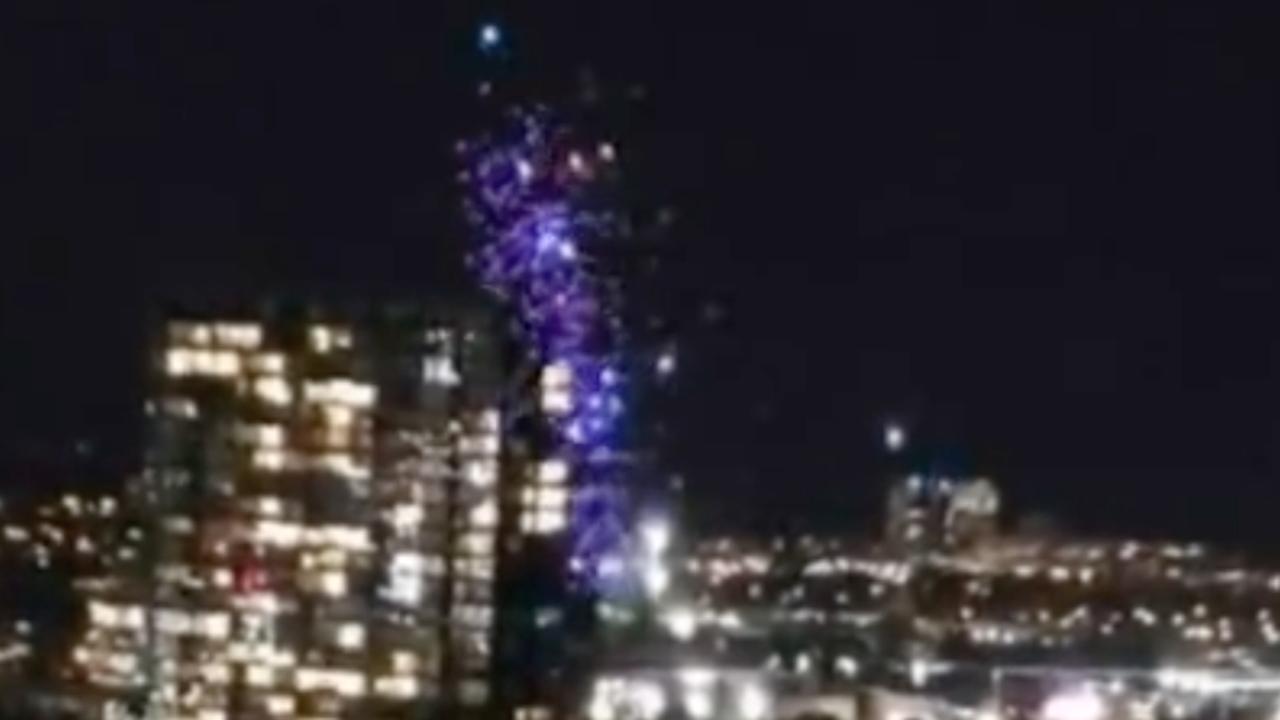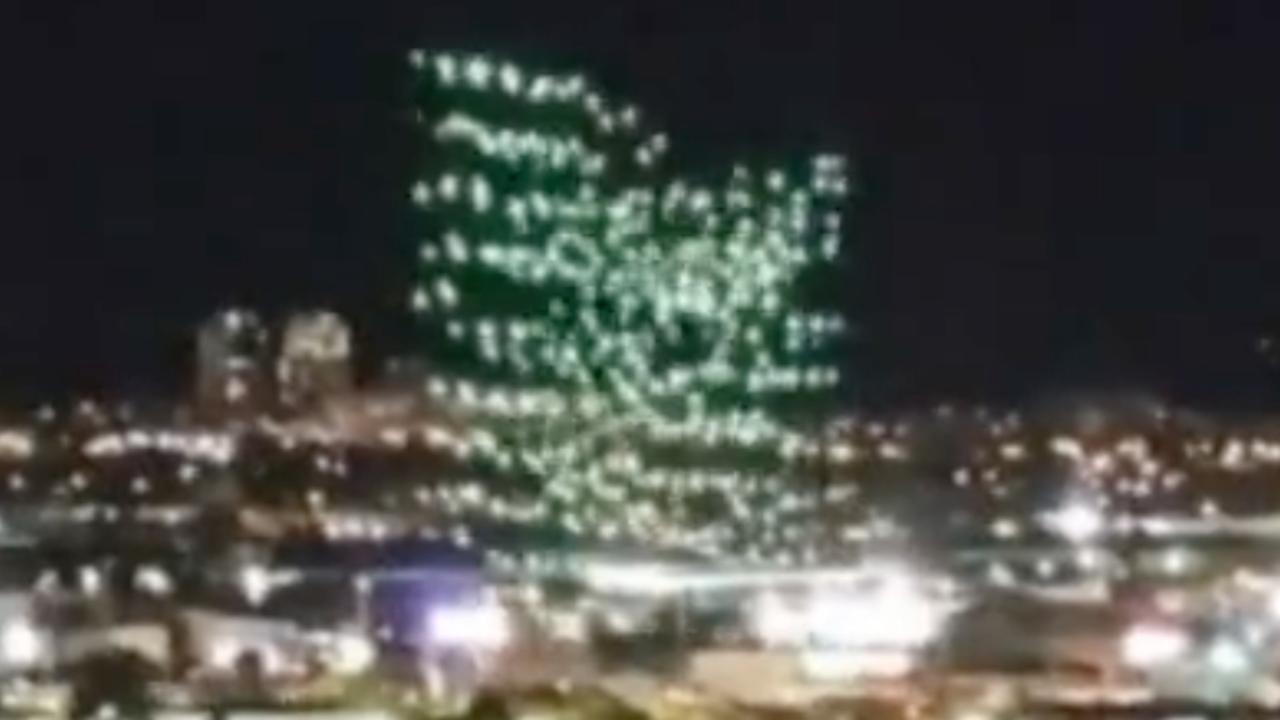Orlando Drone Show malfunction dominated headlines recently, leaving spectators and organizers alike stunned. This incident, a jarring disruption of a meticulously planned aerial spectacle, prompts a deeper examination of the technological complexities, safety protocols, and the broader implications of such events. We delve into the sequence of events, exploring potential causes, and analyzing the responses from various stakeholders.
This analysis covers the technical aspects of the malfunction, including potential hardware or software failures and the role of environmental factors. We’ll also examine eyewitness accounts, the immediate aftermath, and the subsequent investigation, highlighting lessons learned and subsequent changes to safety protocols.
The Orlando drone show malfunction highlights the inherent risks in large-scale drone displays. Such incidents prompt comparisons to other high-profile drone events, such as the recent kazan drone attack , which underscored the potential for misuse of drone technology. Ultimately, both incidents underscore the need for robust safety protocols and improved regulatory oversight for drone operations, regardless of their intended purpose.
The Orlando Drone Show Malfunction
This article details the events surrounding a drone show malfunction in Orlando, exploring the technical aspects, impact on spectators and organizers, the subsequent investigation, and implemented safety improvements. The incident serves as a case study for understanding the complexities of large-scale drone operations and the importance of robust safety protocols.
The Orlando Drone Show Incident: A Detailed Account
The Orlando drone show, a highly anticipated event, experienced a significant malfunction during its performance. The sequence of events began with the drones successfully forming their initial patterns. However, approximately halfway through the show, a number of drones deviated from their programmed flight paths. The specific malfunction involved a loss of synchronization among a subset of the drones, causing them to drift and collide with each other.
This resulted in several drones falling from the sky. The immediate effect was a sudden halt to the show as the audience watched in surprise and concern. A timeline of events is presented below.
The recent Orlando drone show malfunction highlights the inherent risks in large-scale aerial displays. Ensuring reliable performance is crucial, and systems like the ones used to monitor remote locations, such as the cobequid pass camera , offer valuable insights into remote surveillance and potential applications for drone show safety monitoring. Understanding these technological advancements could help prevent similar malfunctions in future drone shows.
| Time | Event | Location | Impact |
|---|---|---|---|
| 8:15 PM | Show begins; drones successfully form initial patterns. | Designated show area in Orlando | Positive audience reaction; successful initial phase. |
| 8:25 PM | Malfunction begins; drones lose synchronization and deviate from flight paths. | Central area of the show | Several drones fall from the sky; show abruptly stops. |
| 8:30 PM | Emergency personnel arrive on the scene. | Show area | Audience is reassured; initial assessment of damage begins. |
| 8:45 PM | Show officially cancelled. | Show area | Audience begins to disperse; investigation begins. |
Technical Aspects of the Malfunction
Several potential causes contributed to the drone malfunction. Software glitches, hardware failures (such as GPS module malfunctions or communication system issues), or even unexpected environmental factors like strong winds or electromagnetic interference could have played a role. While specific safety protocols were in place, the exact adherence to these protocols during the incident requires further investigation. This incident shares similarities with other drone show malfunctions reported globally, often involving communication disruptions or unexpected environmental interference leading to loss of control.
A possible chain of events leading to the malfunction can be illustrated as follows:
- Initial successful drone deployment and formation.
- A software glitch or hardware failure affects a subset of drones.
- Loss of communication or GPS signal in affected drones.
- Drones deviate from programmed flight paths.
- Collisions occur among malfunctioning drones.
- Drones fall from the sky.
- Show is halted.
Impact on Spectators and the Event Organizers, Orlando drone show malfunction
Eyewitness accounts described a mixture of surprise, concern, and ultimately, relief that no serious injuries occurred. Event organizers immediately initiated safety protocols, ensuring clear communication with the audience and coordinating with emergency services. Spectator safety was prioritized through controlled evacuation procedures and providing information updates. The malfunction undoubtedly impacted the reputation of the event organizers and the city of Orlando, requiring a thorough investigation and communication strategy to address public concerns.
- Organizers: Immediate show cancellation, communication with audience and emergency services, implementation of evacuation procedures, public statements addressing the incident.
- Emergency Services: Rapid response to the scene, assessment of damage and injuries, crowd control, securing the area.
- Spectators: Initial surprise and concern, orderly evacuation, sharing of eyewitness accounts on social media.
Post-Incident Investigation and Analysis
A comprehensive investigation was launched to determine the root cause of the malfunction. This involved examining flight logs, drone hardware, software code, and environmental data. The findings informed the implementation of corrective actions, including software updates, hardware upgrades, and potentially revised flight protocols. Lessons learned emphasized the importance of redundant systems, improved communication protocols, and more rigorous pre-flight checks.
This led to changes in safety regulations and protocols, including enhanced redundancy in communication systems and more stringent environmental monitoring.
| Protocol | Pre-Incident | Post-Incident |
|---|---|---|
| Communication System Redundancy | Single communication channel | Dual communication channels with fail-safe mechanisms |
| Environmental Monitoring | Basic wind speed checks | Comprehensive weather monitoring with real-time data analysis |
| Pre-flight Checks | Standard visual inspection | Enhanced pre-flight checks including system diagnostics and simulations |
Visual Representation of the Incident

The malfunctioning drones exhibited erratic movements, deviating significantly from their programmed formations. They appeared to lose synchronization, resulting in chaotic and unpredictable flight patterns. Some drones tumbled uncontrollably, while others drifted slowly before falling to the ground. The lighting conditions were favorable for viewing the show, highlighting the contrast between the intended synchronized movements and the subsequent uncontrolled descent of the drones.
The immediate aftermath revealed several drones scattered on the ground, with minor damage evident on some units. Before the malfunction, the drones were arranged in a complex, dynamic formation. During the malfunction, this formation disintegrated into a chaotic jumble of erratic movements. After the malfunction, the drones lay scattered on the ground, a stark contrast to the precision and order that had preceded the incident.
The Orlando drone show malfunction serves as a stark reminder of the inherent risks involved in large-scale drone displays. While technological advancements have significantly enhanced the capabilities of drone technology, the incident underscores the critical need for robust safety protocols, rigorous testing, and continuous improvement in risk management strategies. A thorough understanding of this event, including its technical causes and the human response, is crucial for ensuring the safe and successful execution of future drone shows.
The Orlando drone show malfunction highlights the complexities of large-scale drone operations. Such incidents underscore the need for robust safety protocols, a concern amplified by recent events like the ukraine drone attack on russia , which showcased both the potential and the inherent risks of drone technology in a conflict setting. Ultimately, the Orlando incident serves as a reminder of the importance of rigorous testing and fail-safes for all drone deployments, regardless of scale.
Questions and Answers
What type of drones were used in the show?
This information would need to be sourced from event organizers or news reports covering the incident.
Were there any injuries reported among spectators?
Details on injuries, if any, would be found in official incident reports or news coverage.
What was the estimated cost of the damage caused by the malfunction?
The financial impact would likely be detailed in later reports by the event organizers or insurance companies.
What is the likelihood of similar incidents happening again?
The probability depends on improvements in safety regulations and technological advancements to prevent such malfunctions.


